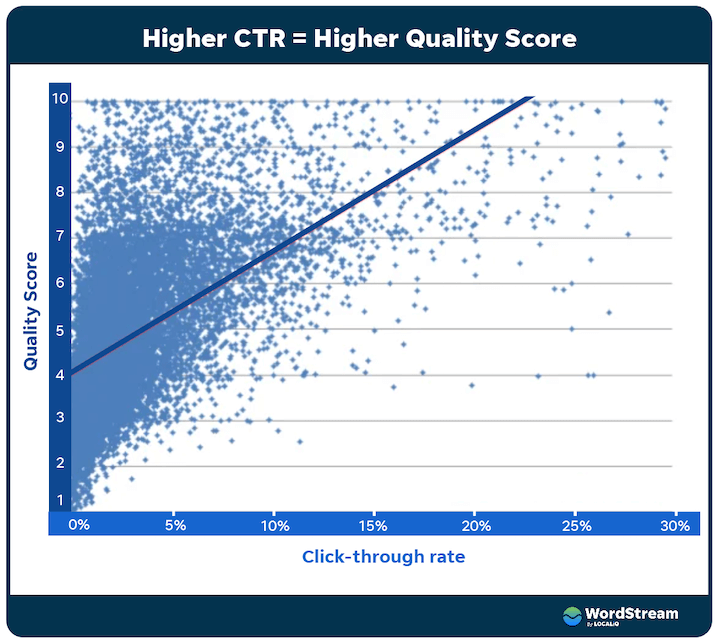Professional Overview: Enhancing Click-Through Fees for Optimum Outcomes
In the realm of electronic marketing, the pursuit to optimize click-through prices offers as a foundation for online success. Clicks are the currency of the digital landscape, and understanding the art of tempting customers to engage additional is a skill that can elevate a brand's visibility and effect. As we navigate via the intricacies of enhancing click-through rates for maximum results, the approaches and strategies employed can make a critical distinction in the performance and efficiency of online projects. The course to accomplishing this objective entails a nuanced technique that explores components such as engaging meta descriptions, fascinating call-to-actions, and sophisticated A/B testing methodologies. Nonetheless, truth key to unlocking the complete potential of click-through rates hinges on the calculated combination of these parts to develop a compelling user experience that resonates with target markets.
Recognizing Click-Through Rates

To calculate CTR, simply divide the variety of clicks by the variety of impacts and increase by 100 to obtain a portion. A high CTR indicates that the material or ad is resonating well with the target market, causing increased website traffic and potential conversions (Click-Through Rate Manipulation). On the other hand, a reduced CTR might signify the demand for adjustments in targeting, messaging, or placement to improve campaign performance
Crafting Engaging Meta Descriptions
Analyzing click-through rates permits marketing experts to maximize electronic marketing techniques and increasing customer engagement, making crafting compelling meta descriptions a crucial next action in boosting the performance of campaigns. Meta summaries work as a quick summary of a web page's material and are shown below the title in search engine results. When done successfully, meta descriptions can tempt users to click with to the web site, thus improving click-through prices.
To craft compelling meta summaries, it is necessary to keep them succinct, engaging, and relevant to the web content on the web page. Consisting of appropriate keywords can likewise boost presence and bring in the target audience. In addition, incorporating a call-to-action within the meta summary can trigger users to take the wanted action, such as clicking the web link to learn more or purchase.
Consistently updating and examining meta descriptions based on performance metrics and user feedback is essential for preserving relevance and performance. By spending effort and time into crafting compelling meta summaries, marketing professionals can raise click-through prices and drive more website traffic to their internet sites, inevitably resulting in improved project outcomes.
Designing Eye-Catching Call-to-Actions
Crafting compelling call-to-actions plays a pivotal function in driving user engagement and raising conversion prices in electronic advertising campaigns. The layout of call-to-actions (CTAs) is crucial as they serve as the gateway for customers to take the wanted activity on a web site or promotion.

Carrying Out A/B Evaluating Approaches
To build upon the foundation of making distinctive call-to-actions, the next step includes implementing A/B screening strategies to refine the effectiveness and optimize of these essential elements in digital advertising and marketing campaigns. A/B testing, also known as split screening, allows marketing experts to contrast 2 variations of a call-to-action to determine which one performs better. This technique includes producing 2 variants (A and B) of the same aspect, such as a switch positioning, message, or shade, and showing them to different segments of the audience. By assessing the click-through rates and various other metrics, online marketers can collect useful understandings into what reverberates best with their target audience.

Leveraging Rich Bits and Schema Markup
Making use of abundant fragments and schema markup can substantially improve an internet site's presence and click-through rates in internet search engine results web pages. Rich bits provide individuals with more information regarding a page directly on the online search engine results page, such as star scores, product prices, or event information. By integrating organized data via schema markup, web sites can communicate far better with internet search engine, bring about even more aesthetically attractive and interesting search results page.
Executing schema markup enables internet search engine to comprehend the web content on a website better, leading to improved search listings that attract attention from the competitors. Rich bits, powered by schema markup, not only draw in customers' focus yet likewise provide them with a preview of the web site's material prior to they click with.
Moreover, abundant bits can boost the credibility and trustworthiness of a website, resulting in higher click-through prices as individuals are most likely to click results that appear well-structured and reputable. By leveraging rich fragments and schema markup efficiently, websites can optimize their CTR Manipulation get-ranked.com search engine presence and drive more website traffic to their web pages.
Verdict
Finally, enhancing click-through prices needs a critical approach that consists of crafting engaging meta descriptions, designing distinctive call-to-actions, implementing A/B screening approaches, and leveraging abundant bits and schema markup. By concentrating on these crucial elements, services can optimize their results and drive even more traffic to their websites.
The true key to opening the full capacity of click-through prices lies in the critical fusion of these elements to produce a compelling user experience that reverberates with target markets.
Understanding Click-Through Fees is essential for maximizing electronic marketing techniques and boosting individual interaction. Click-Through Rate (CTR) is an essential metric that measures the portion of customers that click on a specific link, ad, or call-to-action out of the overall number of perceptions.Assessing click-through prices enables marketers to enhance digital advertising approaches and increasing customer engagement, making crafting compelling meta summaries a vital next action in enhancing the performance of projects. When done efficiently, meta summaries can tempt customers to click via to the internet site, thus improving click-through prices.